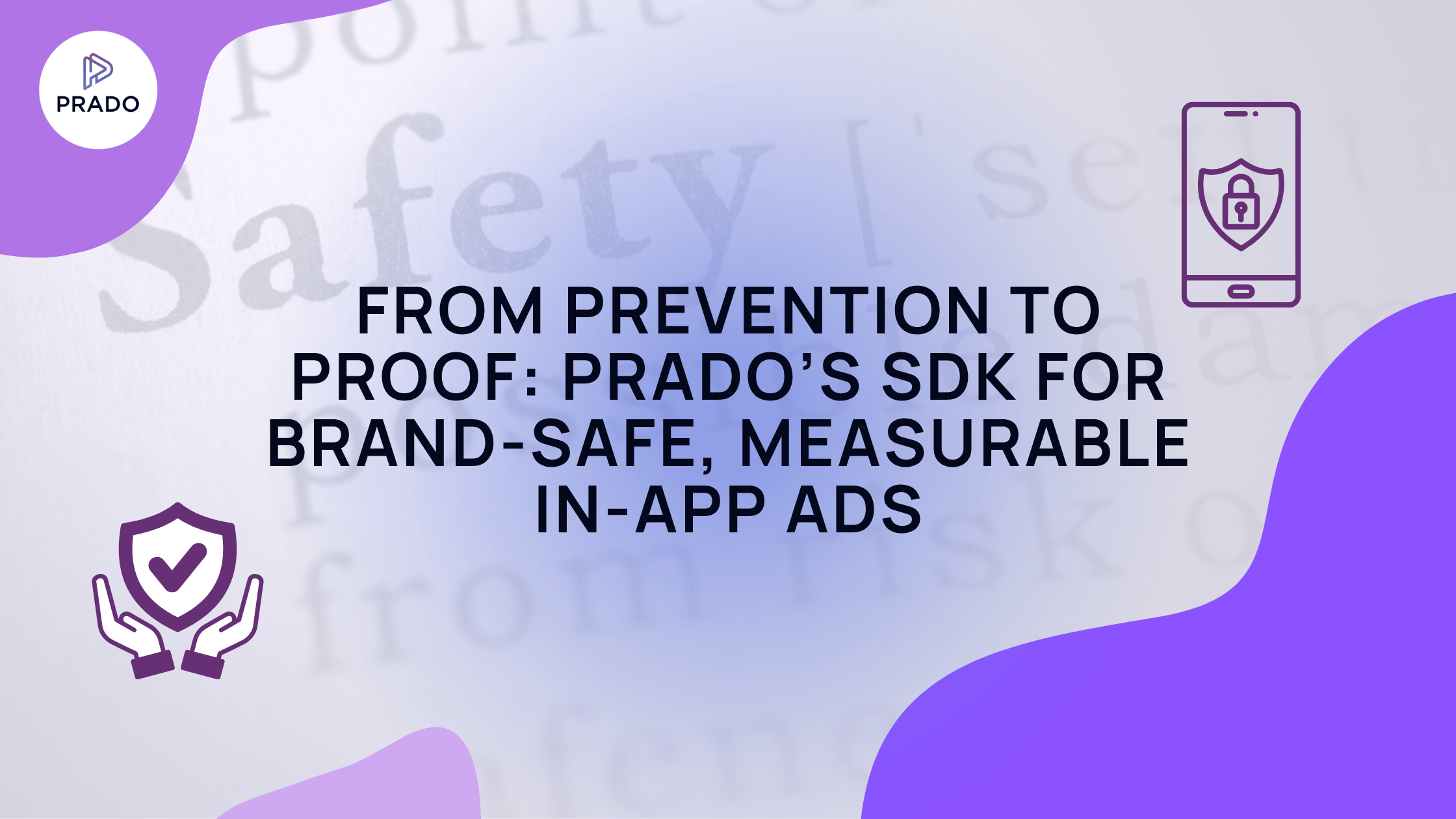How the Prado SDK Protects Brand Suitability at Scale

Context in mobile games is one of the highest-value channels for marketers, but only when it’s managed strategically and correctly. Prado’s position is simple: we want context, not chaos. The Prado SDK enforces suitability at the source, detects issues in near real-time, and delivers compact, privacy-safe evidence so brands can buy contextual inventory with confidence.
Continue reading to understand the risk regulators flagged, how client-side prevention works, how realtime detection and remediation operate, and how partners validate the flow via sandbox and pilot work with Prado’s engineering and ops teams.
Why SDK-level controls matter now
Recent regulator activity has highlighted that a small number of problematic in-app placements can create outsized reputational risk. That doesn’t mean context itself is bad, it means unmanaged context is dangerous. Prado’s approach is to enforce suitability as close to supply as possible: the Prado SDK lives inside vetted, family-safe games and applies controls at the client so risky impressions never reach auction.
Prevent risky placements before they start
Because the Prado SDK runs in the game client, we can enforce adjacency and genre allow-lists, age-gating, consent toggles, and creative template checks before an impression is served. That means certain image/text combinations or whole placement types can be blocked at the source rather than patched later with verification reports. This client-side prevention reduces headline risk for brands, preserves publisher UX, and simplifies compliance for family-targeted inventory, a model Google’s Families Self-Certified Ads SDK guidance highlights as necessary for kids- and family-facing experiences.
Detect realtime signals that let ops move fast
The Prado SDK streams live telemetry, hide/skip rates, completion, attention-per-completed-view, and CTR anomalies, so ops can see problems in hours, not days. Automated throttles and alert rules (for example, pause creative if hide rate crosses a threshold) let teams react immediately, and one-click rollbacks for end-frames remove the need for slow trafficking cycles. These realtime controls turn suitability from a reactive cleanup into an operational capability.
Prove evidence buyers trust, delivered simply
At campaign close Prado provides compact, privacy-safe evidence packets: attention and completion metrics mapped to impressions that passed SDK suitability checks, plus suitability pass-rates you can include in SLAs. Those packets let measurement teams run lift and cohort checks without exposing PII and give buyers the audit trail they need to feel confident about in-app buys. This kind of evidence is increasingly important as the industry standardizes how gaming campaigns are measured.
How partners put this into practice
Technical validation and operational decisions sit with each campaign’s engineering and operations teams, who decide test scope, telemetry checks, and acceptable thresholds. When those agreements are documented up front, suitability signals from the Prado SDK can be translated into a concise Suitability Readout (pass rates, attention and completion metrics) that procurement and audit teams can use to approve buys. Done well, that alignment lets contextual in-app inventory scale with confidence rather than risk.



.png)


